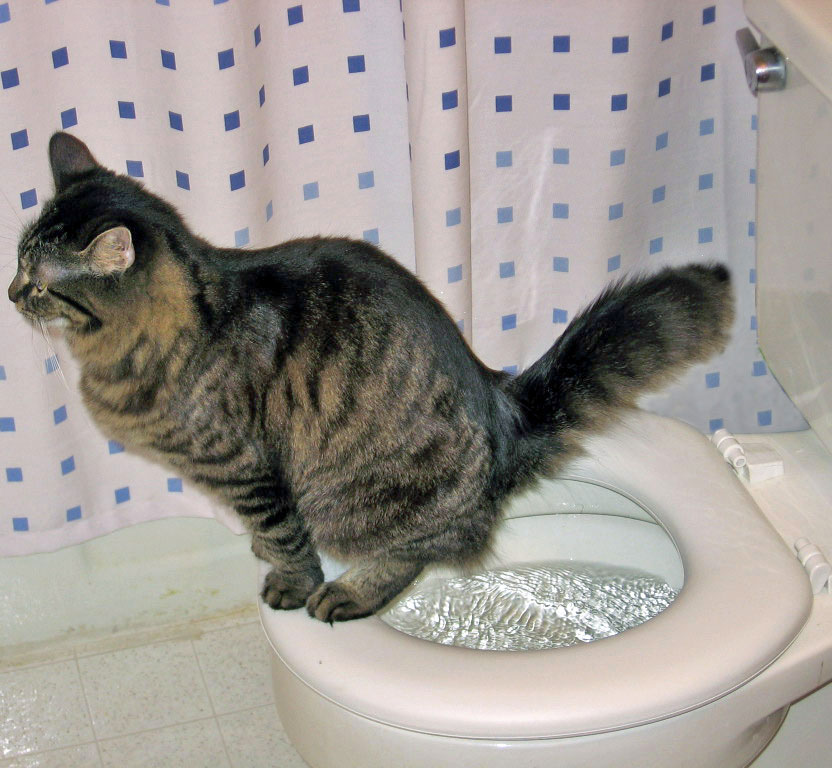We've stumbled upon the article on How to Dispose of Cat Poop and Litter Without Plastic Bags below on the net and accepted it made good sense to relate it with you here.

Intro
As cat proprietors, it's necessary to bear in mind just how we get rid of our feline buddies' waste. While it might seem practical to purge feline poop down the commode, this practice can have destructive consequences for both the setting and human health and wellness.
Ecological Impact
Flushing pet cat poop introduces damaging virus and parasites right into the water supply, presenting a significant danger to marine environments. These contaminants can adversely impact aquatic life and compromise water top quality.
Health and wellness Risks
In addition to environmental concerns, flushing feline waste can additionally pose health and wellness threats to humans. Cat feces may contain Toxoplasma gondii, a bloodsucker that can create toxoplasmosis-- a potentially serious health problem, specifically for pregnant ladies and people with damaged body immune systems.
Alternatives to Flushing
Fortunately, there are safer and a lot more liable means to deal with feline poop. Think about the following alternatives:
1. Scoop and Dispose in Trash
The most typical technique of taking care of cat poop is to scoop it into a biodegradable bag and throw it in the trash. Be sure to use a devoted clutter inside story and get rid of the waste immediately.
2. Usage Biodegradable Litter
Select eco-friendly pet cat clutter made from products such as corn or wheat. These clutters are eco-friendly and can be securely taken care of in the garbage.
3. Hide in the Yard
If you have a backyard, take into consideration hiding feline waste in an assigned area away from vegetable yards and water sources. Be sure to dig deep enough to stop contamination of groundwater.
4. Mount a Pet Waste Disposal System
Buy a family pet garbage disposal system particularly developed for cat waste. These systems make use of enzymes to break down the waste, lowering smell and ecological effect.
Final thought
Responsible pet possession prolongs beyond providing food and sanctuary-- it likewise involves proper waste monitoring. By refraining from purging feline poop down the toilet and opting for different disposal techniques, we can reduce our ecological impact and safeguard human health.
Why Can’t I Flush Cat Poop?
It Spreads a Parasite
Cats are frequently infected with a parasite called toxoplasma gondii. The parasite causes an infection called toxoplasmosis. It is usually harmless to cats. The parasite only uses cat poop as a host for its eggs. Otherwise, the cat’s immune system usually keeps the infection at low enough levels to maintain its own health. But it does not stop the develop of eggs. These eggs are tiny and surprisingly tough. They may survive for a year before they begin to grow. But that’s the problem.
Our wastewater system is not designed to deal with toxoplasmosis eggs. Instead, most eggs will flush from your toilet into sewers and wastewater management plants. After the sewage is treated for many other harmful things in it, it is typically released into local rivers, lakes, or oceans. Here, the toxoplasmosis eggs can find new hosts, including starfish, crabs, otters, and many other wildlife. For many, this is a significant risk to their health. Toxoplasmosis can also end up infecting water sources that are important for agriculture, which means our deer, pigs, and sheep can get infected too.
Is There Risk to Humans?
There can be a risk to human life from flushing cat poop down the toilet. If you do so, the parasites from your cat’s poop can end up in shellfish, game animals, or livestock. If this meat is then served raw or undercooked, the people who eat it can get sick.
In fact, according to the CDC, 40 million people in the United States are infected with toxoplasma gondii. They get it from exposure to infected seafood, or from some kind of cat poop contamination, like drinking from a stream that is contaminated or touching anything that has come into contact with cat poop. That includes just cleaning a cat litter box.
Most people who get infected with these parasites will not develop any symptoms. However, for pregnant women or for those with compromised immune systems, the parasite can cause severe health problems.
How to Handle Cat Poop
The best way to handle cat poop is actually to clean the box more often. The eggs that the parasite sheds will not become active until one to five days after the cat poops. That means that if you clean daily, you’re much less likely to come into direct contact with infectious eggs.
That said, always dispose of cat poop in the garbage and not down the toilet. Wash your hands before and after you clean the litter box, and bring the bag of poop right outside to your garbage bins.
https://trenchlesssolutionsusa.com/why-cant-i-flush-cat-poop/

Do you really like reading up on Don’t flush cat feces down the toilet? Put a remark directly below. We will be interested to find out your opinion about this content. Hoping that you visit us again later on. I beg you take a moment to promote this post if you enjoyed it. Thank you for your time. Don't hesitate to check up our site back soon.
Book A Service Call